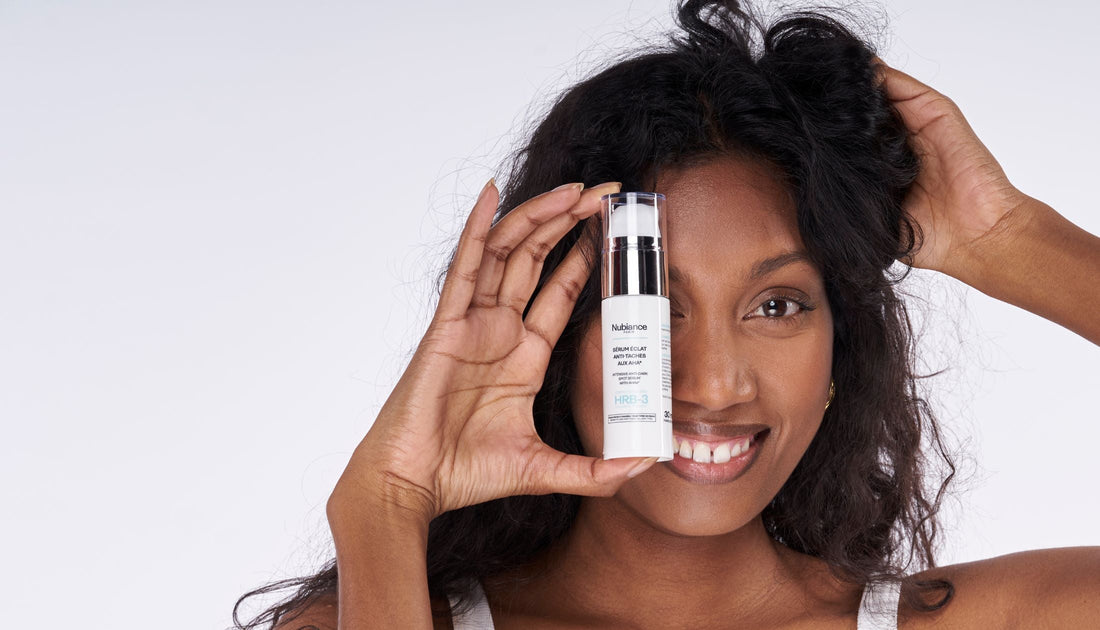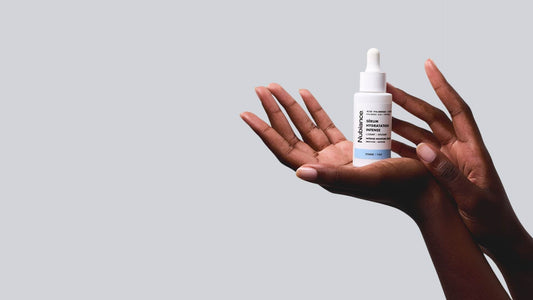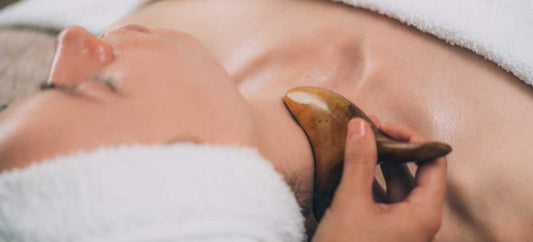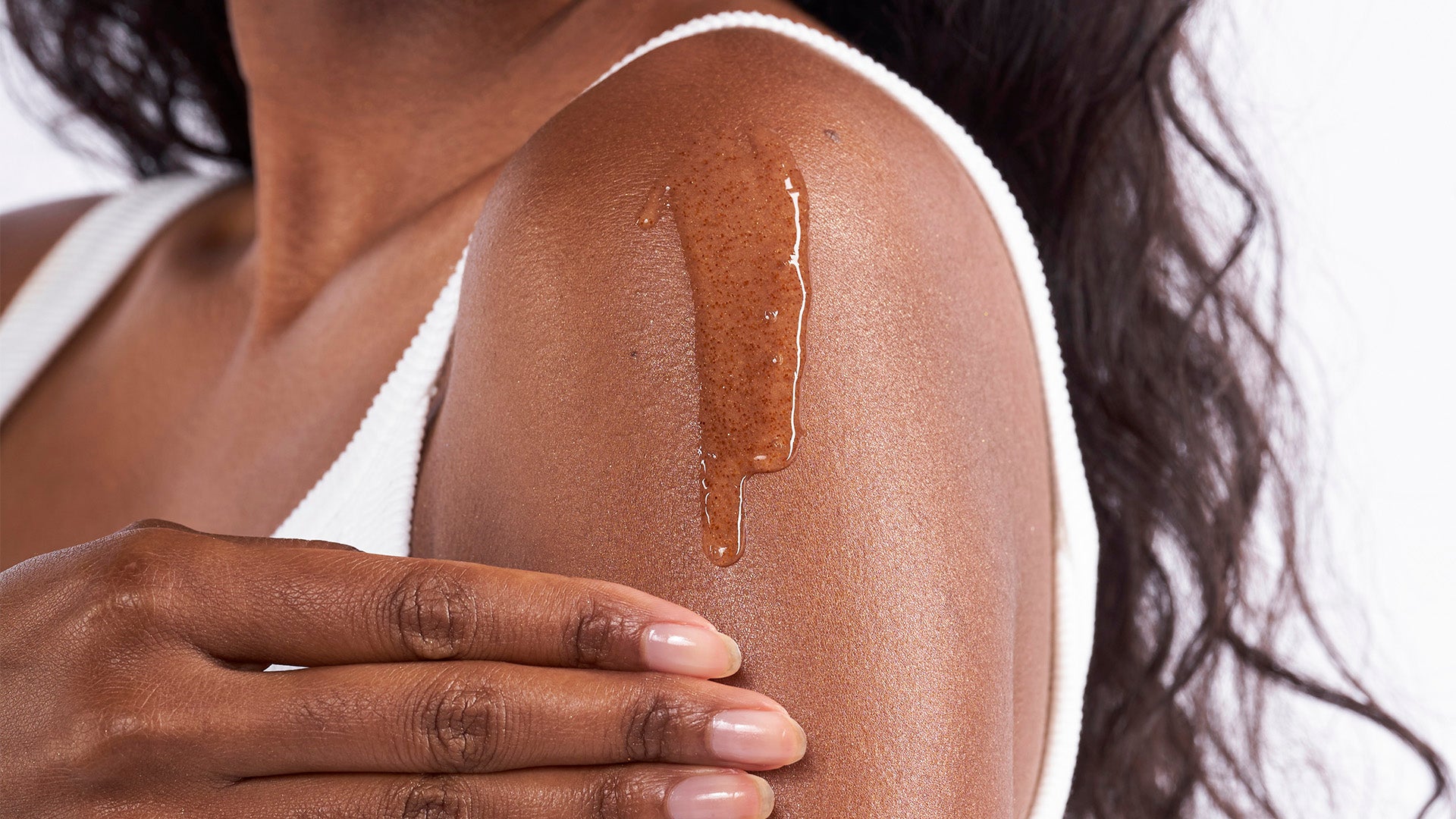
Melasma: how to erase this hyperpigmentation of the skin?
Partager
Melasma is a type of hyperpigmentation that is quite common in women, especially on nubian skin, especially during and after pregnancy. It usually appears as large dark areas on the face. However, this brown spot can also appear on the body and in men who undergo repeated exposure to the sun.
If you suffer from melasma , discover here the different possible treatments as well as some tips for managing this brown spot on a daily basis. Find our complete range of anti-stain body and face treatments for an even complexion.
What is melasma?
Melasma is an overproduction of melanin, the pigment that gives skin its color and causes tanning. Deposits form in certain areas of the face, forming large brown spots which persist after detanning. Unlike solar lentigo or age spots , melasma forms a sort of mask, hence its nickname “pregnancy mask”.
There are three types of melasma:
-
Epidermal melasma affects the superficial layers of the skin. Hyperpigmentation is brown in color with well-defined edges.
- Dermal melasma affects the deepest level of the dermis and is characterized by blue-gray plaques.
- Mixed melasma appears as a gray-brown pigment.
The impact on Nubian skin
Melasma is more common in people with dark skin because they have more melanocytes, the cells that produce melanin . In principle, the melanin produced will be diffused into the epidermis and, thanks to cell renewal, will be able to make the stain disappear. But, from time to time, instead of going upwards, the melanin falls to the bottom of the dermis, impregnates there and persists. This results in persistent pigmented scars.
The presence of brown spots is often more visible on dark skin than on light skin, making the complexion very quickly uneven.
Causes and potential treatments
Intrinsic and extrinsic factors cause melasma:
- Internal factors: genetic predisposition, inflammatory processes, hormonal factors and aging.
- External factors: solar radiation, photosensitizing drugs and exposure to chemical agents.
As a treatment for melasma , you can find:
- Depigmenting creams
- Chemical peels or laser treatments
- Sun protection
Topical treatments are only effective if the hyperpigmentation affects the upper layers of the skin.
Also read our article on how to treat dark spots on the body .

Understanding melasma
The causes of melasma
The causes of melasma are multiple, light plays an essential role in the appearance of this brown spot:
-
Exposure to UV and light: this is the main factor and UV is not the only cause, the entire solar spectrum is involved.
-
Hormonal variations: pregnancy is of course a time of significant hormonal upheaval, which explains the term “pregnancy mask”. Taking oral contraceptives or hormone replacement therapy can also lead to the appearance or persistence of melasma.
-
A genetic predisposition: certain people have a particular sensitivity to light which is transmitted through their genes.
-
Reactions to cosmetic products and medications: certain chemical substances, such as oral or topical treatments, medications, perfumes and essential oils, can have a photosensitizing effect upon exposure to light.
- Endocrine disorders: certain diseases affecting hormones, such as thyroid disorders for example, can trigger melasma.
Symptoms of melasma
Irregular dark spots appear on the skin, usually on both sides of the face. In the vast majority of cases, hyperpigmentation remains localized in the center of the face and on the cheeks, forehead, upper lip and nose. Sometimes the spots are only located on one side of the face.
More rarely, melasma appears on the forearms. The spots are neither painful nor itchy, and the problem is only cosmetic.
To find out more, discover through this article which cosmetic active ingredients are incompatible with the sun .

Fight against melasma
Possible preventions
The best treatment for melasma remains preventative. You need supervised exposure to the sun, strict sun protection and sunscreens. Strong sources of estrogen should also be avoided. The contraceptive pill, hormone replacement treatments for menopause and endocrine disruptors are some of them.
Although hormonal balance and estrogen dominance do not depend exclusively on diet, it is essential to start by favoring foods that improve the work of the liver, which promote good work of the thyroid and foods rich in zinc. . It is possible to reinforce the work of these foods with certain food supplements.
Treatment options
Melasma may be slow to respond to treatment and even if treated, often returns when treatment is stopped, especially if the affected area is exposed to the sun.
There are different treatment methods that can be prescribed by your doctor to reduce melasma, or even make it disappear in the case of epidermal melasma:
- Cryotherapy
- Laser or pulsed light treatment
- Depigmenting peels
- Products based on hydroquinone, retinoic acid and corticosteroids
- Photo-modulation by LED lamp which can be used in addition to peeling, laser and pulsed light
In addition to these professional or medical treatments, it is possible to use cosmetic treatments to help fade melasma. To erase your brown spots on both the face and body, Nubiance offers you the Complete Anti-Dark Spots Face and Body Range . Suitable for black, dark and mixed skin, these products allow you to regain an even complexion and clear skin. Your hyperpigmentation spots disappear thanks to the combination of ingredients such as hexylresorcinol and vitamin B3.
For this beauty routine, use HRB-3 anti-dark spots products and follow the different steps:
- HRB-3 Anti-Dark Spot Radiance Serum contains AHAs which stimulate cell renewal. This treatment has a gentle peeling effect on your melasma. This exfoliating product based on fruit acids effectively prevents and corrects brown spots.
- HRB-3 Anti-Dark Spot Day Care , with SPF30 sun protection, limits the pigmentation of your melasma due to UV rays. This product concentrates a combination of HRB-3 active ingredients with an SPF30 sun filter.
- HRB-3 Anti-Dark Spot Night Treatment reduces brown spots and strengthens the epidermis overnight. Enriched with restorative superfruit extract, this evening cream also stimulates collagen production.
- HRB-3 Anti-Dark Spot Body Milk corrects hyperpigmentation spots on your body and hydrates your skin thanks to shea butter and glycerin.
Use this face and body care routine to reduce your melasma, deeply hydrate your skin and regain an even complexion. In one month, the results are already clearly visible.
Also read our article to find out everything about hyperpigmentation and depigmentation in black skin .

Tips for managing melasma on a daily basis
MakeupMelasma makeup is based on the principle of color complementarity. So, applying a slightly orange tint to brown spots will help neutralize and fade them. Subsequently and if necessary, the application of a complexion corrector is a good complement to even out the complexion more intensely. Choose good quality products rich in pigments in order to effectively camouflage this hyperpigmentation. Makeup to hide brown spots must also resist water and perspiration to maintain the correction in all circumstances.
Here is how to proceed with makeup for your melasma in 4 steps:
- Start by cleansing your skin with our Cleanactyl® soap-free cleansing gel , then moisturize it with a suitable treatment containing sun protection.
- Neutralize brown spots by applying a coral tint if you have mixed skin or an orange tint if your skin is black.
- Even out your complexion with a color corrector that matches your skin tone.
- Set makeup using a mattifying powder.
However, remember that makeup should not overshadow the essentials in the event of melasma: sun protection remains the priority. Moreover, some makeup products include sun protection in their formula.
SunscreenAlthough primarily hormonal, melasma is triggered by the sun. If you are pregnant or taking the pill, it is recommended to apply sun protection on the first sunny days of spring to prevent your melasma from darkening.
The sun is a source of life and light, but also of harmful ultraviolet rays. UVB rays cause sunburn and skin damage. But they do not act alone. Present throughout the year, even on cloudy days, UVA and infrared rays penetrate deep into the epidermis, degrading its essential elements. To mitigate their effects, opt for broad-spectrum UVA-UVB sun protection , rich in antioxidants.




